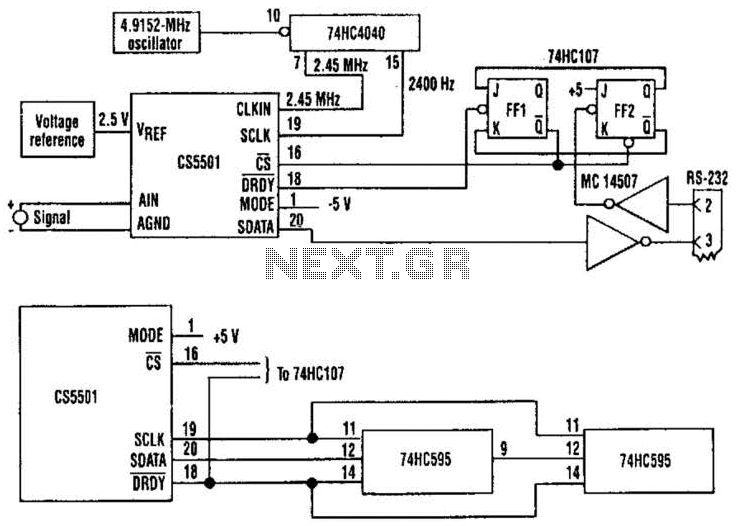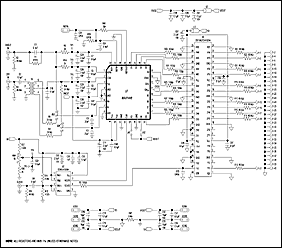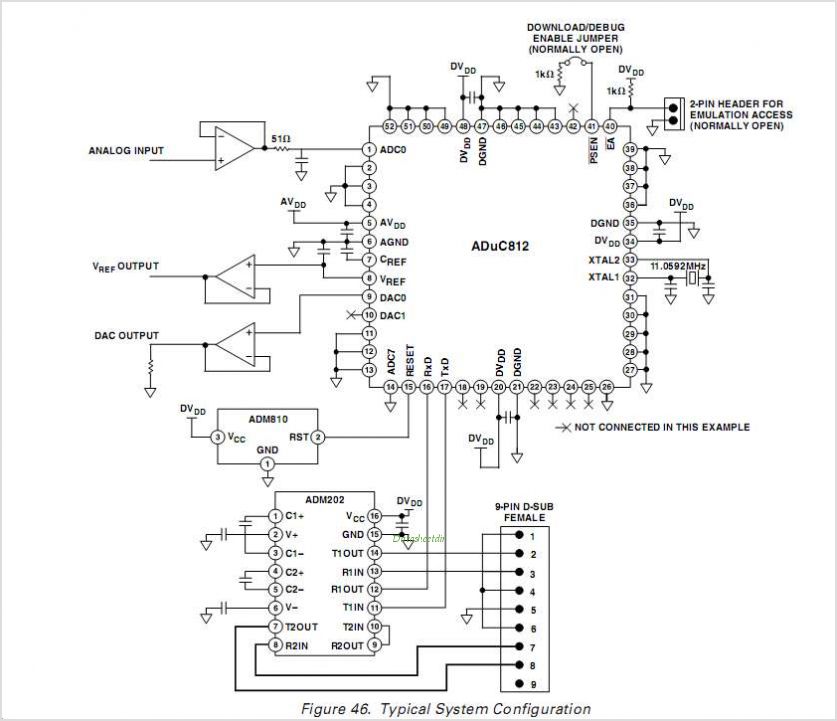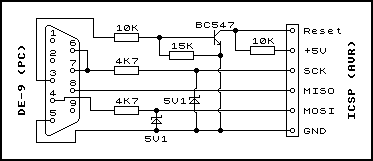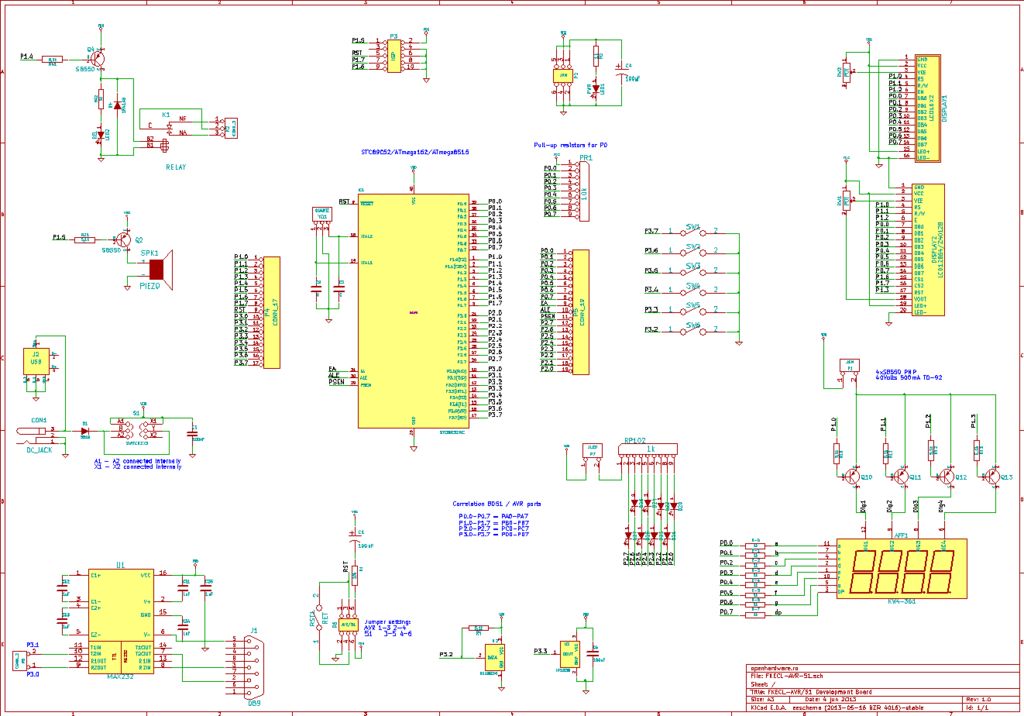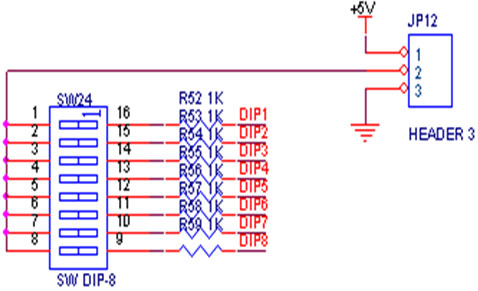
how to use in-built adc of avr
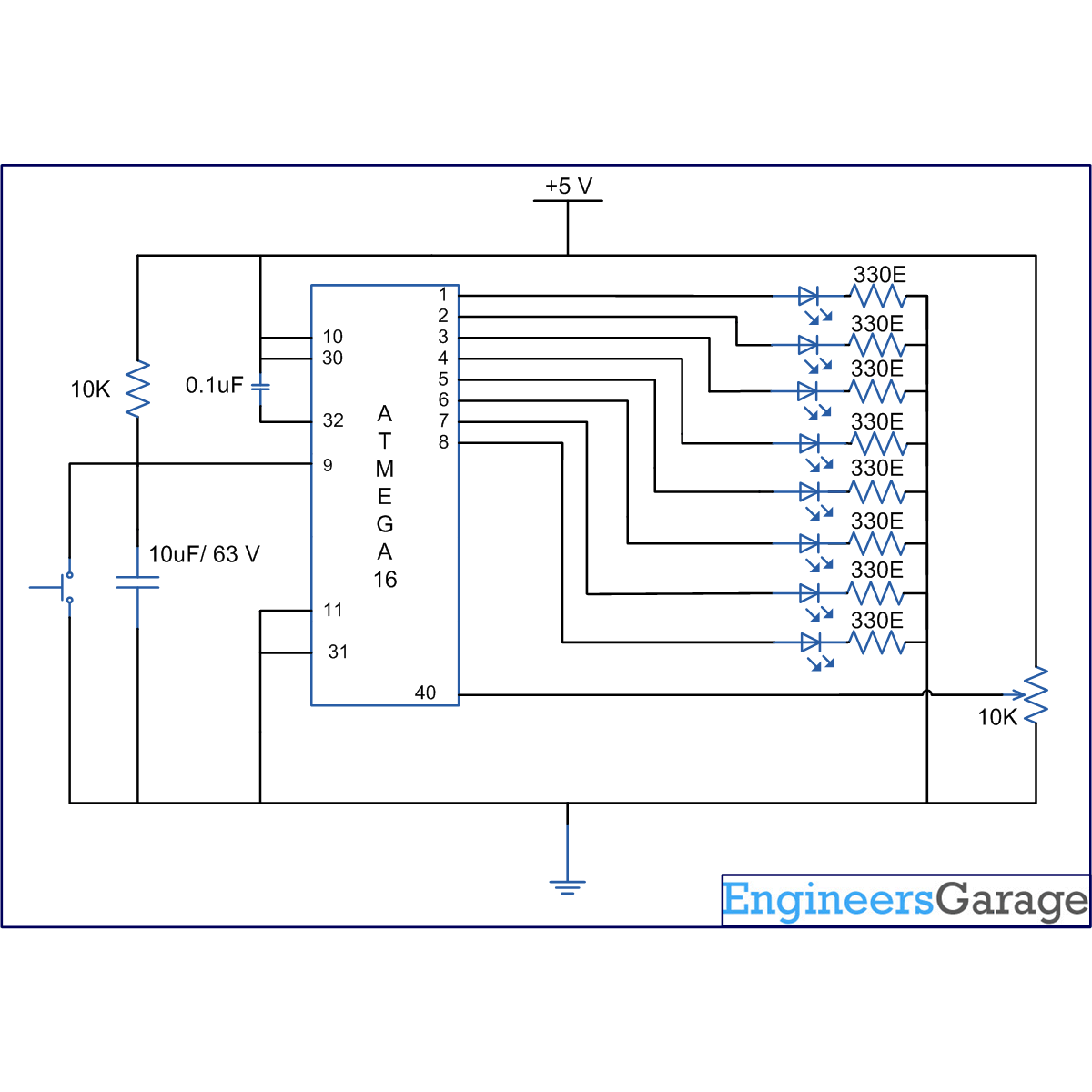
A microcontroller operates using digital language, while the inputs it receives from the environment are predominantly analog, meaning they change continuously over time. To enable the microcontroller to interpret these inputs, an Analog to Digital Converter (ADC) is utilized. This device collects the analog signals from the environment and transforms them into a digital format that the microcontroller can process. The processed information is then outputted as desired. In the Atmega16 microcontroller, the ADC channels are multiplexed with PORTA and utilize common pins (pin 33 to pin 40). The ADC system of the Atmega16 includes several important pins: AREF (pin 32), which provides the reference voltage for ADC conversions and must be less than or equal to the supply voltage (Vcc); and AVCC (pin 30), which serves as the supply voltage for PORTA and the ADC, requiring a connection to Vcc. Additionally, a ceramic capacitor (104) is connected between AVcc (pin 30) and AREF (pin 32), with AVcc connected to an external supply of +5V.
The Atmega16 microcontroller's ADC system is critical for interfacing with analog signals, allowing for the conversion and processing of real-world data. The ADC operates by sampling the input voltage at the AREF pin, which establishes the upper limit of the analog input range. The resolution of the ADC is determined by the reference voltage; thus, it is essential to ensure that AREF is set appropriately to achieve the desired accuracy in conversions.
The AVCC pin must be connected to the microcontroller's supply voltage to ensure proper functionality of the ADC and PORTA. This connection is vital for the stability of the ADC operation, as fluctuations in supply voltage can lead to inaccurate readings. The ceramic capacitor between AVcc and AREF serves to filter out noise and stabilize the reference voltage, enhancing the performance of the ADC.
When designing circuits that utilize the Atmega16's ADC, it is crucial to consider the layout and grounding to minimize interference that could affect the analog signals. The common pins used for ADC inputs should be carefully managed to avoid crosstalk and ensure reliable performance. Proper decoupling capacitors should also be employed near the supply pins to maintain a clean power supply to the microcontroller and its peripherals. Overall, the integration of the ADC with the Atmega16 microcontroller allows for effective data acquisition and processing in various applications, including sensor interfacing and control systems.Microcontroller understands only digital language. However, the inputs available from the environment to the microcontroller are mostly analog in nature, i. e. , they vary continuously with time. In order to understand the inputs by the digital processor, a device called Analog to Digital Converter (ADC) is used.
As the name suggests this peripheral gathers the analog information supplied from the environment and converts it to the controller understandable digital format, microcontroller then processes the information and provides the desired result at the output end. ADC channels in Atmega16 are multiplexed with PORTA and use the common pins (pin33 to pin40) with PORTA.
ADC system of Atmega16 microcontroller consists of following pins: ii. AREF: Pin32 of Atmega16 microcontroller, the voltage on AREF pin acts as the reference voltage for ADC conversion, reference voltage is always less than or equal to the supply voltage, i. e. , Vcc. iii. AVCC: Pin30, this pin is the supply voltage pin for using PORTA and the ADC; AVCC pin must be connected to Vcc (microcontroller supply voltage) to use PORTA and ADC.
Connect the circuit as shown in the circuit diagram. A ceramic capacitor 104 is connected in between AVcc (pin 30) and Aref (pin 32). AVcc (pin 30) is connected to external supply +5V. 🔗 External reference
The Atmega16 microcontroller's ADC system is critical for interfacing with analog signals, allowing for the conversion and processing of real-world data. The ADC operates by sampling the input voltage at the AREF pin, which establishes the upper limit of the analog input range. The resolution of the ADC is determined by the reference voltage; thus, it is essential to ensure that AREF is set appropriately to achieve the desired accuracy in conversions.
The AVCC pin must be connected to the microcontroller's supply voltage to ensure proper functionality of the ADC and PORTA. This connection is vital for the stability of the ADC operation, as fluctuations in supply voltage can lead to inaccurate readings. The ceramic capacitor between AVcc and AREF serves to filter out noise and stabilize the reference voltage, enhancing the performance of the ADC.
When designing circuits that utilize the Atmega16's ADC, it is crucial to consider the layout and grounding to minimize interference that could affect the analog signals. The common pins used for ADC inputs should be carefully managed to avoid crosstalk and ensure reliable performance. Proper decoupling capacitors should also be employed near the supply pins to maintain a clean power supply to the microcontroller and its peripherals. Overall, the integration of the ADC with the Atmega16 microcontroller allows for effective data acquisition and processing in various applications, including sensor interfacing and control systems.Microcontroller understands only digital language. However, the inputs available from the environment to the microcontroller are mostly analog in nature, i. e. , they vary continuously with time. In order to understand the inputs by the digital processor, a device called Analog to Digital Converter (ADC) is used.
As the name suggests this peripheral gathers the analog information supplied from the environment and converts it to the controller understandable digital format, microcontroller then processes the information and provides the desired result at the output end. ADC channels in Atmega16 are multiplexed with PORTA and use the common pins (pin33 to pin40) with PORTA.
ADC system of Atmega16 microcontroller consists of following pins: ii. AREF: Pin32 of Atmega16 microcontroller, the voltage on AREF pin acts as the reference voltage for ADC conversion, reference voltage is always less than or equal to the supply voltage, i. e. , Vcc. iii. AVCC: Pin30, this pin is the supply voltage pin for using PORTA and the ADC; AVCC pin must be connected to Vcc (microcontroller supply voltage) to use PORTA and ADC.
Connect the circuit as shown in the circuit diagram. A ceramic capacitor 104 is connected in between AVcc (pin 30) and Aref (pin 32). AVcc (pin 30) is connected to external supply +5V. 🔗 External reference
